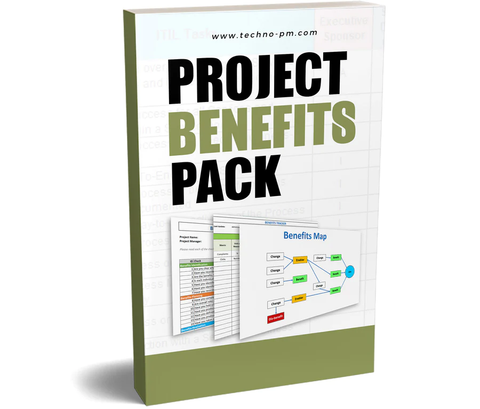Project Benefit Profile Template : Drafting The Key Information About Benefits
Projects exist to enable benefits, yet benefits realization remains one of the most difficult processes to embed, and there are not many organizations that can claim to do it effectively. Unfortunately, many pay lip service to benefits realization, acknowledging its importance but being unable to bridge that gap between what is planned and what is delivered.
 While there are many reasons behind it, a common one is that benefits are not properly identified in the organization. Let’s be honest: how many times have you seen projects being approved and benefits being made up as if fill in the blanks, retrospectively? Sure, projects enable benefits; however, they should also be selected and pursued because of the benefits, not despite them. To do so, let’s start by formalizing benefits in the organization – almost as an identity card, proving that they exist! Ladies and gentlemen, let me introduce you to a Benefit Profile.
While there are many reasons behind it, a common one is that benefits are not properly identified in the organization. Let’s be honest: how many times have you seen projects being approved and benefits being made up as if fill in the blanks, retrospectively? Sure, projects enable benefits; however, they should also be selected and pursued because of the benefits, not despite them. To do so, let’s start by formalizing benefits in the organization – almost as an identity card, proving that they exist! Ladies and gentlemen, let me introduce you to a Benefit Profile.
What Is It?
What Does It Involve?
1.Benefit Identification
Outlines the key reference data about the benefit, such as its unique identifier, name, or ownership. A benefit represents an advantage, that is, something perceived as a positive gain by the key stakeholders. That should be clear from the benefit title; it should be worded in a way that is understandable by any. Also, the owner should be clearly identified since, arguably, one of the key causes for poor benefits realization is the lack of ownership. The owner should reside within the business rather than in the project. The project team is disassembled when the project is completed leading to a gap in accountability for benefits, which tends to be realized long after the completion.
2.Benefit Overview
This section provides detailed information about the benefit, such as the benefit type, who is the primary beneficiary for the benefit, the assumptions and risks surrounding the benefit, or the timescale for the realization of the benefit. By consulting the Benefit Overview section, stakeholders will be equipped with supporting information about the benefit, which will enable a better understanding of what the benefit is about and how it aligns with the organizational strategic objectives.
3.Benefit Enablers
Benefits do not happen out of magic, although that would be not just fantastic but also kind of cool! For that reason, being knowledgeable of what is required – in terms of resources, projects, and other initiatives – to realize the benefit is fundamental. These are called enablers and refer to the factors that can leverage the benefit opportunity. This section also entails new working practices and other business changes needed. It identifies who is responsible for overseeing them, that is, the dependencies outside the current project. Benefit enablers are often uncovered due to a benefit mapping exercise and highlight the fact that benefits do not exist in isolation but in a context that can promote or hinder its success.
4.Benefit Realization Plan
Finally, the Benefit Profile also contains a section detailing the plan for the realization of the benefit. This activity should not be overlooked or left to later in the project as if you are failing to plan, you are planning to fail, as the saying goes. The Benefits Realization Plan outlines how the benefit will be measured, by whom, when, and what is the baseline and the target to be realized. Make no mistake: if you can’t measure it, you can’t manage it!
The Benefit Profile is a living document and it should be reviewed and updated at regular points such as stage gates since, if changes are implemented in projects, there is a potential impact for the realization of benefits too. Besides being an important artifact in the Benefits Planning activities, the Benefit Profile is also going to be used as input for the Benefits Tracker (also known as Benefit Register), in this way ensuring that no benefit is left behind once the fun of the project and program delivery starts.






